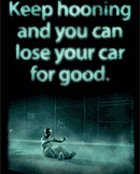6/5/2010
Australia: Speed Cameras Used To Confiscate CarsWestern Australia uses speed cameras as the sole evidence used to impound and permanently confiscate automobiles.

Being accused by a speed camera now provides sufficient evidence for police in Western Australia to confiscate a car. On Friday, a 49-year-old man lost his Porsche 944 Turbo because a combination red light camera and speed camera accused him of driving 130km/h in a 60 zone (80 MPH in a 37 zone) at the intersection of Riverside Drive and Barrack Street in Perth. The cameras began ticketing drivers at that location on May 7.
Under the state's so-called "hoon" law, which was revised in January, police can seize vehicles accused of performing a burnout or "sustained loss of traction," driving 27 MPH over the speed limit, or any type of driving classified as "reckless." For a first accusation, the penalty is a mandatory 28-day impound, regardless of the owner's culpability or the circumstances involved. No judge verifies or approves the seizure. A car is impounded for three-months on a second accusation. On the third, police get to keep the car permanently. Each day a car is stored racks up significant fees that must be paid, along with a towing charge, if the vehicle is to be returned.
The confiscation of cars based solely on the evidence provided by a speed camera is significant considering Australian officials have been forced to refund hundreds of thousands of fines to drivers falsely accused by an automated ticketing machine. Earlier this year, over 900 innocent motorists received inaccurate speed camera tickets in New South Wales. In 2008, Victoria officials secretly deactivated cameras known to be faulty. The state openly admitted that there had been 1130 incidents of motorists falsely accused of speeding between 2004 to 2006. The most significant incident of all happened on July 2003 when a Victoria camera accused motorist Vanessa Bridges' 1975 Datsun 120Y of driving at 98 MPH. Even after the thirty-year-old Datsun was tested and found to be capable of reaching speeds no greater than 73 MPH, officials dug in their heels and insisted the photo enforcement system was accurate. After public outrage forced independent testing, officials admitted that faulty in-ground sensors and electromagnetic interference had been responsible for generating bogus speed readings. This forced Victoria Police to refund 165,000 speed camera tickets.
The car confiscation, however, is not limited to camera enforcement. Western Australian police officers running a laser speed trap on Friday were able to grab a 2007 Mercedes-Benz CLS 350, a car that retailed for A$160,000 when new. The owner, a 27-year-old, had been driving on the Mitchell Freeway at 1:45am, according to a police news release.
Western Australia officials expect to generate $56 million from its automated ticketing machines next year.


